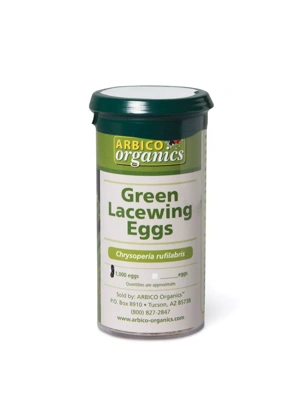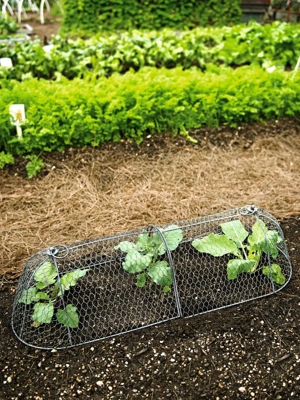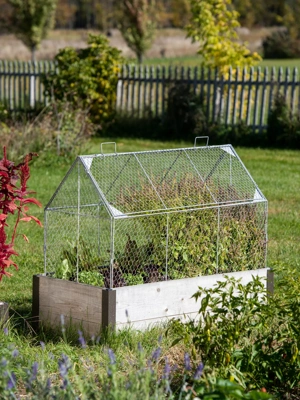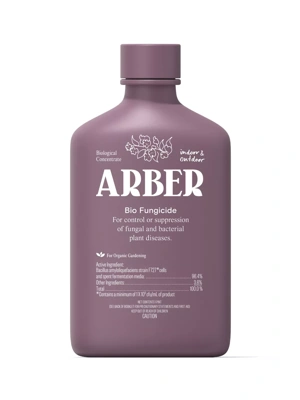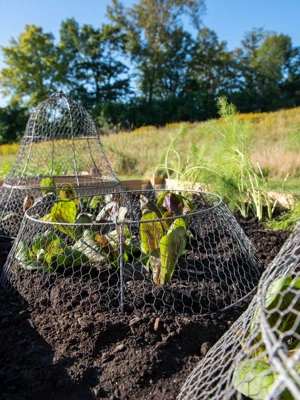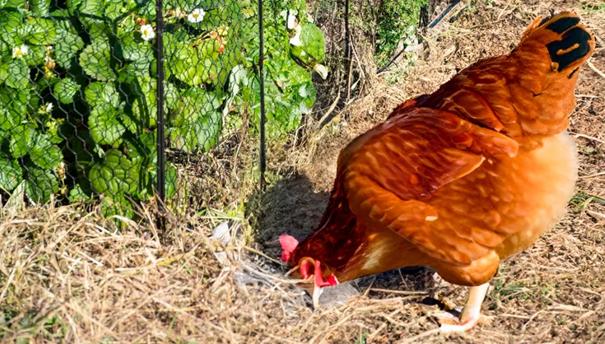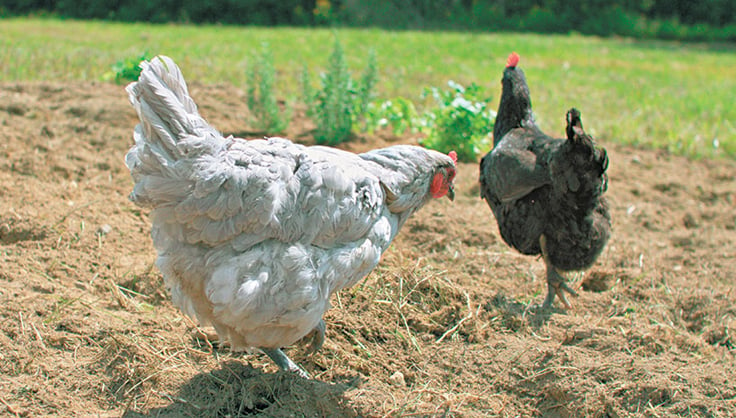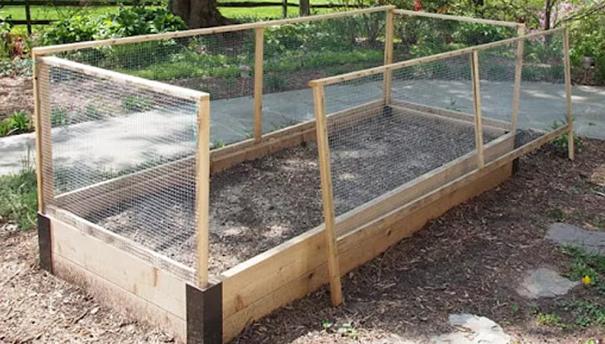Gardening with Chickens: Pest Control
[Editor’s note: This is the second in a series of three blog posts featuring excerpts from Lisa Steele’s book, Gardening with Chickens: Plans and Plants for You and Your Hens. Read the first post on Getting Started and the third post on Making Compost.]
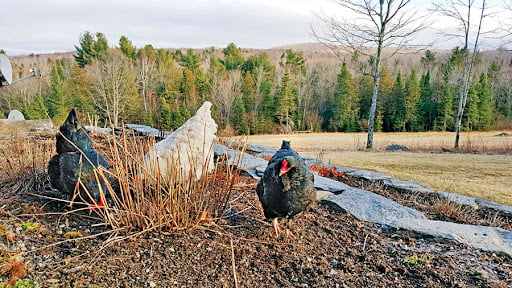
As you’d expect, my first recommendation for controlling insect pests in your garden is using your flock of chickens. Now, it’s important to realize that chickens don’t discriminate between good and bad bugs. They’ll eat the heroes and the villains. But in the long run, chickens tend to be an effective, safe, and inexpensive way to keep your garden’s bug population in check. Here’s a season-by-season rundown of how your flock can help control garden pests.
Spring
When you let your chickens into the garden in the spring, you’ll find they naturally work the soil, turning it over, aerating it, and preparing the ground for planting as they scratch and peck, looking for weeds, bugs, and other goodies in the dirt. Chickens have keen eyesight, which allows them to easily spot worms and bugs.
Hopefully, you will find that your chickens have eaten many of the soil-dwelling garden pests, bug larvae, and weed seeds before they have the chance to cause problems in your garden.
Some of the “bad” bugs — those that harm plants — that my chickens help control are cabbageworms, grasshoppers, Japanese beetles, and June bugs.
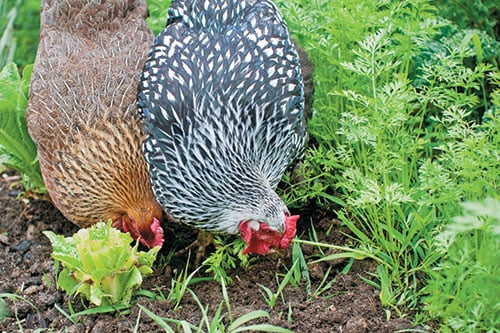
Summer
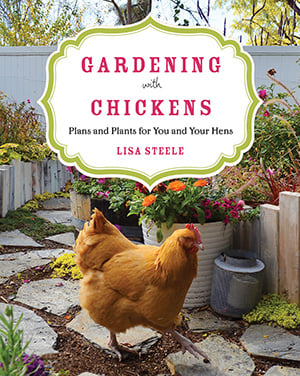 Once your plants are established and growing well, but before the vegetables are ripe, you can let your chickens into the garden for short periods. They will love pulling any weeds that have grown and searching for bugs. If you have a bumper crop on the way, you’ll want to supervise the chickens pretty closely so they don’t eat your harvest along with the bugs.
Once your plants are established and growing well, but before the vegetables are ripe, you can let your chickens into the garden for short periods. They will love pulling any weeds that have grown and searching for bugs. If you have a bumper crop on the way, you’ll want to supervise the chickens pretty closely so they don’t eat your harvest along with the bugs.
Chickens are a bit picky as to which bugs they will eat, but unfortunately, their preferences probably don’t align with yours. They won’t differentiate between “good” bugs (such as worms, praying mantises, and ants) and “bad” bugs (such as Japanese beetles and stinkbugs), so you might want to safely relocate any of the good bugs you spot before the chickens can gobble them up. Chickens will also eat toads, which are extremely beneficial to gardens, so keep an eye out for them as well so you can move any you find to safety.
Lisa Steele’s book is called Gardening with Chickens: Plans and Plants for You and Your Hens
Even if you don’t let your chickens into your garden throughout the growing season, be sure to share any bug-eaten produce with your chickens. Not only do they not mind if a tomato is half-eaten, they consider the offending bug a tasty treat as well! The same goes for any vegetables nibbled by rabbits or deer — your chickens will love to eat them.
Fall
Fall is the perfect time to let your chickens wander freely in your garden. Once you have harvested your crops, you can let your chickens in to clean up the remaining stalks, vines, and stems. The chickens will not only collect their fair share of insects, they’ll also make quick work of any bug-eaten leaves or produce that wasn’t fit for harvest. Is there a bug or worm inside a tomato? You might think it’s gross, but to a chicken, it’s just free protein!
A cautionary note: Some garden plants are toxic to chickens, especially if eaten in large quantities; these include asparagus, rhubarb, and members of the nightshade family, such as white potatoes, tomatoes and eggplant. Lisa’s Gardening with Chickens book includes a more comprehensive list.
About Lisa Steele
Lisa is a lifelong gardener and chicken keeper. On her popular Fresh Eggs Daily website and Facebook page she shares tips on keeping chickens, as well as gardening advice, DIY projects, and recipes.
Last updated: 07/12/2023
Print this Article:
Related items
Related Articles
Get the Dirt
Stay up to date on new articles and advice. Please fill out the information below.


